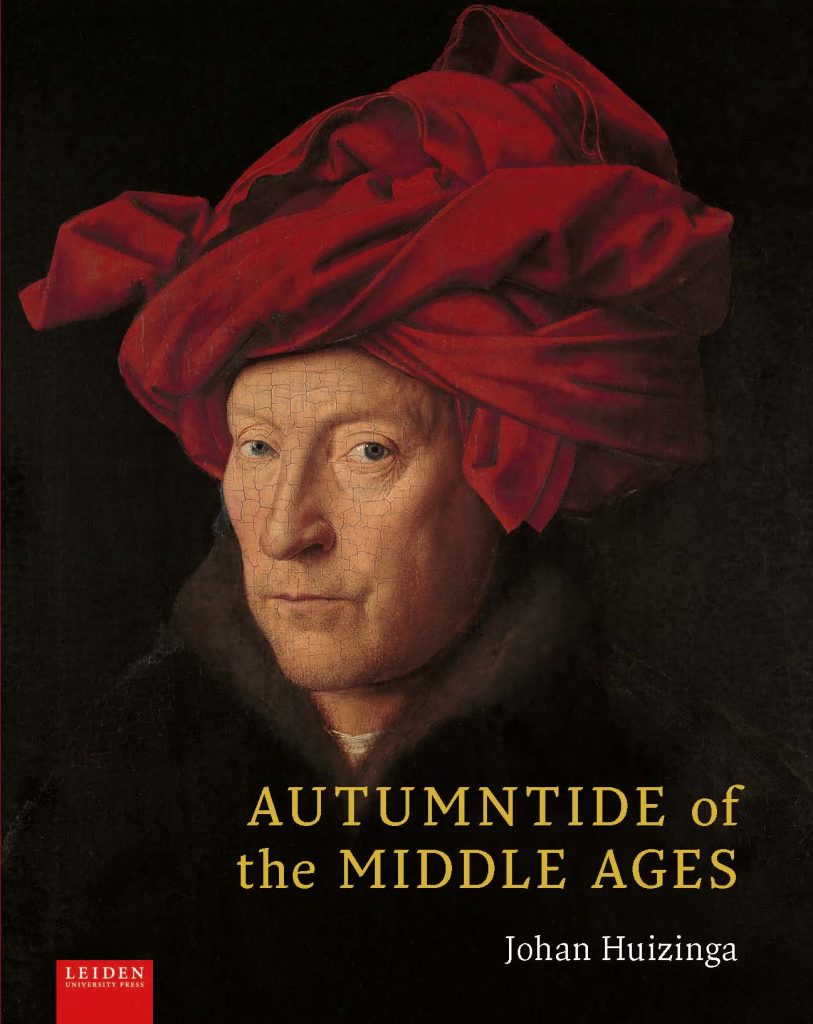
This new English translation of Huizinga’s Autumntide of the Middle Ages (Herfsttij der Middeleeuwen) celebrates the centenary of a book that still ranks as one of the most perceptive and influential analyses of the late medieval period. Its wide-ranging discussion of fourteenth and fifteenth century France and the Low Countries makes it a classic study of life, culture, and thought in medieval society.
The new and now unabridged translation of the original text captures the impact of Huizinga’s deep scholarship and powerful language. The translation is based on the Dutch edition of 1941 – the last edition Huizinga worked on. It features English renderings of the Middle French poems and other contemporary sources, and its colour illustrations include over three hundred paintings and prints, illuminated manuscripts, and miniatures pertinent to Huizinga’s discourse. A complete bibliography of Huizinga’s sources will facilitate further research, while an epilogue addresses the meaning and enduring importance of this classic work.
Johan Huizinga (1872-1945), one of the founders of cultural history, ranks among the most influential Dutch thinkers of the twentieth century. He produced a body of writing on subjects that range from medieval art to the mechanization of modern America. The publication of Herfsttij der Middeleeuwen in 1919 brought him international renown, and contributed to the multiple nominations he received later in his career for the Nobel Prize in Literature, a rare accolade for a professor of history. Among his other important works are Erasmus (1924), In the Shadow of Tomorrow (1935) and Homo Ludens (1938). He died in internal exile, a few months before the liberation of the Netherlands.
Diane Webb has translated a wide range of literature on art-historical and historical subjects, including Ruusbroec: Literature and Mysticism in the Fourteenth Century by Geert Warnar, as well as Herman Pleij’s Dreaming of Cockaigne: Medieval Fantasies of the Perfect Life and Colors Demonic and Divine: Shades of Meaning in the Middle Ages and After (for which she was awarded the Vondel Prize for Dutch Translation in 2005).
Graeme Small is Professor of Medieval History at Durham University and the author of several books, including George Chastelain and the Shaping of Valois Burgundy as well as Court and Civic Society in the Burgundian Low Countries (with Andrew Brown) and Late Medieval France.
Anton van der Lem, a leading expert on Huizinga, has written or edited many articles and books, including the recently published Rereading Huizinga. It was at his suggestion that Leiden University Press decided to publish this first full-text translation from the original Dutch into English, and he set the standard with his Dutch centenary edition of Herfsttij. A fellow of Leiden University Libraries, he is the editor of https://huizinga-online.nl.